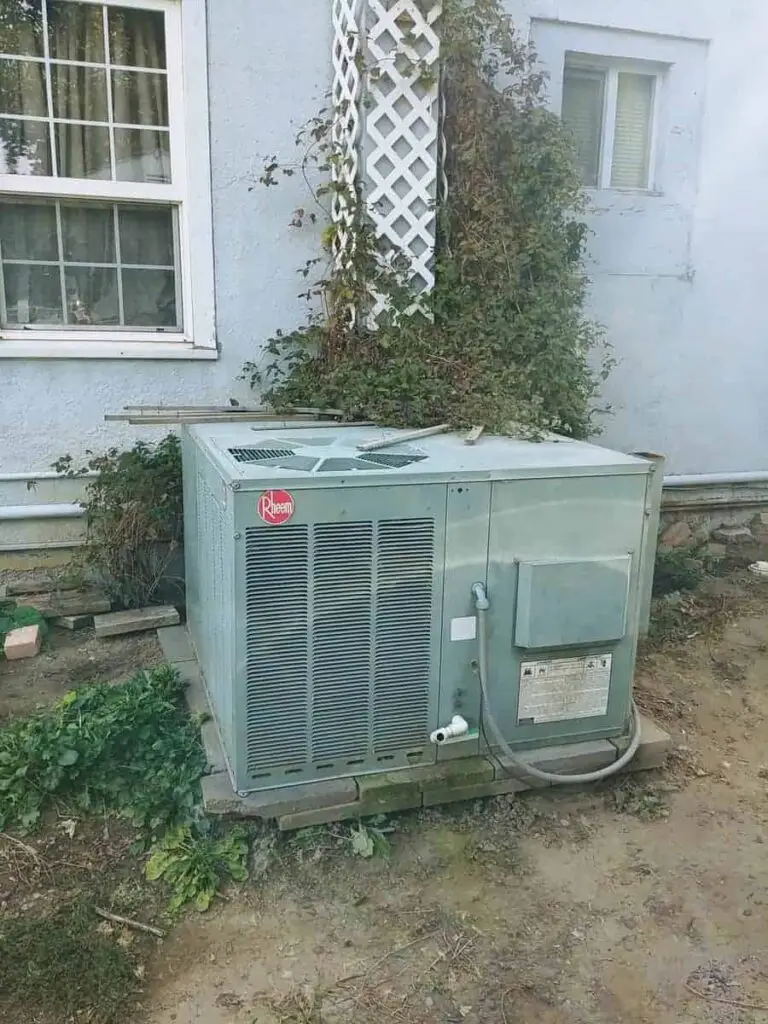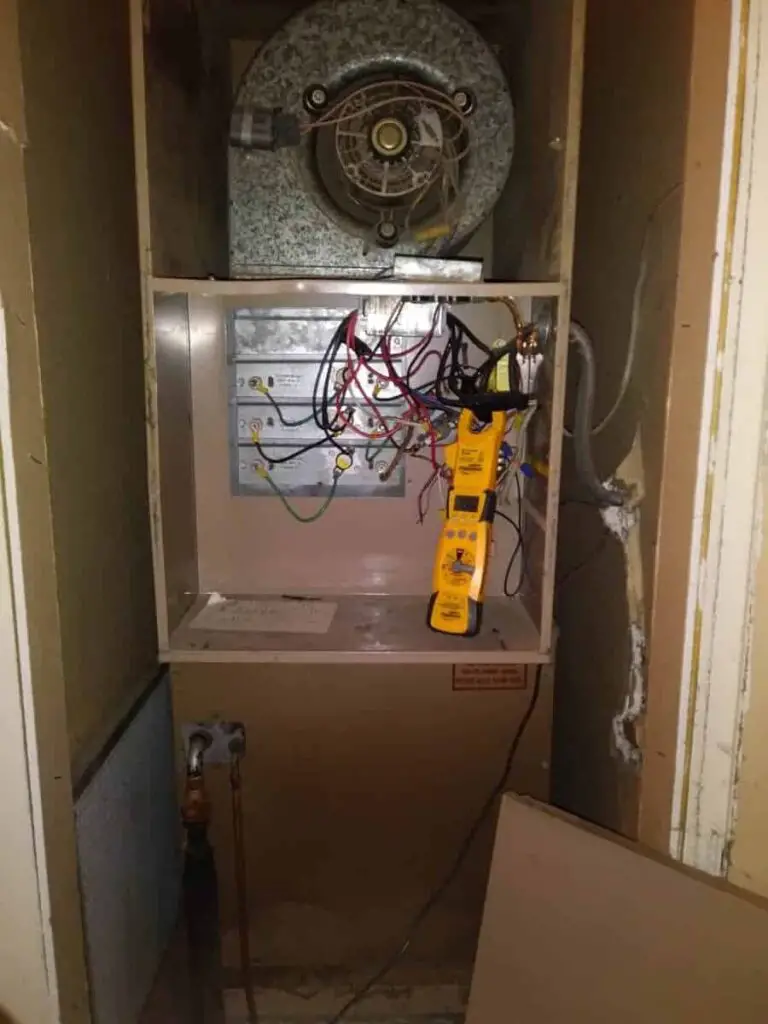A heat pump heats and cools. A gas furnace with ac, heats and cools. If natural gas is not available, then buy a heat pump. If natural gas is available, then your repairs will be less using gas and you will have warmer heat. You may like a dual fuel system that uses both a gas furnace and a heat pump.
So, what is the difference between a heat pump and a gas furnace with air conditioning? They do the same thing with different fuels.
The internet has junked up the terms and it’s confusing as can be to know the value and the function of the two systems. When I read some of the articles related to this topic I wonder where this information is coming from. They must copying each other and then changing the word to keep from plagiarizing each other.
For this article we will be discussing split system furnaces, air conditioners and heat pumps. Not the package units that are used mostly in commercial applications or on residential roof tops in some areas. A few package units are setting on the ground at the side of a home with duct work into the home.

A split system means that the work done by the equipment is split between an indoor and an outdoor unit that work together to heat and cool. Coupled by a set of refrigeration lines or copper tubing that move the hot and cold gases (refrigerant) created by the compressor between the coils that air in your house is moved through.
The term air conditioner has been sort of misused. Air conditioning actually means to condition the air. It could be by adding or taking away humidity and adding heat and cooling as needed. So the term air conditioning has been used interchangeably with cooling even though air conditioning really refers to anything that conditions the air in your home or business.
In the most general sense, air conditioning can refer to any form of technology that modifies the condition of air (heating, (de-) humidification, cooling, cleaning, ventilation, or air movement). In common usage, though, “air conditioning” refers to systems which cool air. In construction, a complete system of heating, ventilation, and air conditioning is referred to as HVAC.
wikipedia.org
From here on I’ll refer to air conditioner as a cooling only unit. Now compare the term cooling only unit to the term heat pump which is a heating and cooling unit. Hopefully that make the terminologies more clear.
So when we talk about a heat pump verses a gas furnace with a cooling only unit we now are talking more about apples and apples as far as the job the equipment performs, which is heating and cooling your home.
Cooling only units (air conditioners) and heat pumps look the same physically on the outside. You couldn’t tell the difference unless you read the model number and looked up the description. or looked inside the unit.
Looking inside a split system cooling only unit you’ll see a compressor and a little bit of piping compared to looking inside a heat pump you’ll see a compressor and a reversing valve and a bunch more piping. The reversing valve and a circuit board is what makes a heat pump do both heating and cooling.
What Is A Single Fuel Heating System?
A heat pump uses only electricity to heat and cool your home so it’s a single fuel system. It has an outdoor unit that looks just like an air conditioner on the outside but it contains controls and valves on the inside that an air conditioner or cooling only unit does not have. A heat pump has to have an auxiliary source of heat because they don’t heat well in sub freezing weather. A heat pumps auxiliary heat is most commonly an electric furnace.
An electric furnace with a cooling only unit would be a single fuel system as opposed to a gas furnace with a heat pump. Can you recognize the two sources of heat or dual fuel?
Even though a gas furnace has to have electricity to operate and it’s fuel is natural gas or propane it is still considered a single fuel system. It would be the same answer when referring to a fuel oil furnace.
We only bring this single fuel question up because of the emerging market for dual fuel systems.
Watch this video clear through to get a really good demonstration of how a dual fuel system works.
What Is The Average Life Of A Heat Pump vs A Gas Furnace With An AC?
This is an extremely important consideration regarding your decision to have a heat pump system or a gas furnace with a cooling only unit. When you weight the replacement cost with the time a unit will last it brings a whole other light onto the subject.
We’re speaking with a broad stroke here. Average life of heating and cooling units based on equipment that have been properly installed and maintained. Realizing that in the state of Washington they have about 400 cooling hours per year verses Arizonians run their cooling units for about 2500 hours per year. And the reverse is true when talking about heating hours.
In my area I tell my customers that the average life of a heat pump is about 12 to 15 years. I’ve removed some heat pumps that were over 20 years and I replaced one that the compressor died right at one year after installation and the new unit is still running great after 10 years of service. Cooling only units can last 20 plus years.
Heat pumps have a shorter life span because of the stress put on the system caused by running year around and the defrost cycle that has to occur to prevent the outdoor coils from icing up in the winter.
The defrost cycle can be eliminated by the use of a gas furnace for the auxiliary or back up heat. In the set up of the digital thermostat the heat pump is locked out and the gas furnace takes over at an outdoor temperature that would not require the heat pump to defrost, thus allowing the heat pump to last longer.
How Does A Thermostat Work On A Heat Pump With Gas Furnace Backup?
This is the really cool part of newer digital thermostats. When you or your installer read the installation instructions and find the part describing how to set up your new thermostat to match the type of equipment you have.
This is a simple step by step process that programs your thermostat to match the equipment you have chosen. Under system type you would probably choose a 2 heat/1 cool heat pump (with aux heat) followed by your choice of backup or auxiliary heat.
Later in the setup you would choose the temperature that you want to lockout or turn off the outdoor unit or heat pump. Set it somewhere between 35 and 40 degree and when temperatures plummet below that set point you’ll be heating with warm natural gas or propane.
The outdoor temperature is sensed by a wireless thermistor mounted on the outside wall of your home in a shady location that won’t be influenced by the sun. Those people with a gas backup have fewer complaints about about cooler air coming from their registers and outdoor units running constantly in the winter.
Can A Gas Furnace Be Backup To Any Heat Pump?
In most cases you can use a natural gas or propane furnace as a backup or auxiliary source of heat. As long as your heat pump system is not one of the newer, what they call a communicating system. Communicating HVAC equipment have special electronic controls that tie the furnace, the outdoor unit and the thermostat together for what is supposed to be optimum performance.
My son bought a new house and didn’t like the thermostat so he bought a new thermostat that appealed more to his liking. I have to admit that when we went to visit, I got it, why he wanted a different thermostat. It was a pain to operate. Anyway, he took his existing thermostat off the wall and noticed that their was only two wires connected to the thermostat.
I would say that most heat pump thermostats are 24 volts in which case you would have s about 6 wires or more depending on features connecting the thermostat to the furnace. So he called me, what are dad’s for anyway. Maybe one of these days more systems will be communicating if it proves to be more efficient and affordable.
I had to explain that his thermostat was a factory match to the system or a communicating thermostat. He was stuck using whatever the factory had as options.
So, in most cases, yes, you can replace your electric furnace with a natural gas or propane furnace. Years ago my company had a special relationship with the local gas company. They fed us many referrals and gas company referrals carried a lot of weight in the eyes of their customers.
It’s been so long ago I don’t know who got the idea of putting heat pumps on gas furnaces to take advantage of the really low cost heating available during the mild cool weather. It didn’t take long for our gas company representative to notice. She told us if we kept adding heat pumps to gas furnaces they would raise the rates to our (and their) customers.
The gas company was loosing revenue during the mild weather and they didn’t like it at all. And we didn’t like the idea of their leverage against us, but had to weigh that with all the referrals we received.
What About A Heat Pump Oil Furnace Combo?
It’s really insignificant what you use as your backup heat source, but as with any backup heat the indoor coil has to be set in the correct place in relationship to the auxiliary heat.
Imagine that this electric furnace was any source of backup heat for a heat pump. You can see my meter in the control compartment where I’m checking the elements and sequencers.
Below that compartment is the heat pump coil that as near as I can tell was an air conditioner. Sorry, cooling only unit. The cooling only unit was replaced with a heat pump and the coil was left in the same position as before, on the leaving air side of the furnace.
That’s okay for a cooling only unit because the strip heat doesn’t come on during cooling. But with a heat pump the strip heat does come on during heating and when this one came on you can see in the next image what the pressures must have gone to.

This image on the right shows the service valves where a technician would attach his gauges to measure pressures in this heat pump. Because the coil was on the wrong side of the furnace the pressure actually blew off the top of the cap that covered the valve stem that opens and closes the valve.
The arrows indicate the small cap on the left that is still intact. On the right is the cap with the center blown out. I’d sure hate to have been standing there when it blew.

So getting the right information is crucial in design and application of HVAC equipment. Having knowledgeable heating and cooling sales people and technicians who back up their work should be your number one consideration.
